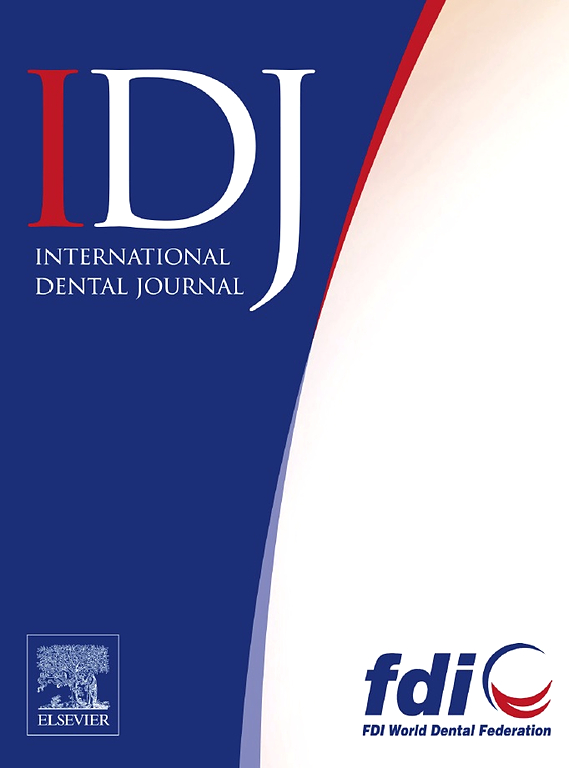新生儿唇腭裂口腔内扫描仪的准确性和真实感:三维数字模型的比较
IF 3.7
3区 医学
Q1 DENTISTRY, ORAL SURGERY & MEDICINE
引用次数: 0
摘要
简介和目的口腔扫描仪最近作为传统印模材料的一种更安全、更方便的替代方法出现,用于捕捉腭裂异常患者的牙槽形态。本研究旨在评估不同口腔内扫描仪生成的唇腭裂新生儿三维数字模型的准确性。具体来说,它侧重于评估这些扫描仪在制作单侧完全性唇腭裂模型中的准确性和准确性。方法对40例新生儿单侧唇腭裂石膏模型进行分析。以数字游标卡尺为参考,人工测量37个前、23个后参数的节段间距离。使用5台口腔内扫描仪:3Shape TRIOS 4、iTero Element 5D、Medit i700、PANDA P2和Straumann Virtuo Vivo对模型进行扫描。测试值(来自3D扫描)与参考值之间的差异以每毫米误差表示。通过对10%的模型进行重复扫描和测量来评估精度。统计学分析采用单样本t检验、Wilcoxon检验和Friedman检验,显著性水平为0.05。利用Geomagic Control X软件进行三维叠加,进一步验证了结果。结果sobserver的可靠性非常好,ICC值为1.000。与其他扫描仪相比,Medit i700扫描仪在准确性上存在显著差异,其后段间距离(P = 0.021)和前段距离的误差更高(P = 0.001至0.013)。精度在所有扫描仪上都表现出极好的一致性(ICC = 0.999至1.000)。结论虽然所有扫描仪都符合临床可接受标准,但Medit i700在某些参数上的准确性较低。本研究强调了扫描仪选择对腭裂新生儿准确数字模型生成的重要性。本文章由计算机程序翻译,如有差异,请以英文原文为准。
The Accuracy and Trueness of Intraoral Scanners in Neonates With Cleft Lip and Palate: A Comparison of 3D Digital Models
Introduction and aims
Intraoral scanners have recently emerged as a safer and more convenient alternative to traditional impression materials for capturing alveolar morphology in patients with cleft anomalies. This study aimed to assess the accuracy of 3D digital models generated by different intraoral scanners in cleft neonates. Specifically, it focused on evaluating the trueness and precision of these scanners in producing models of unilateral complete cleft lip and palate.
Methods
Forty plaster models of unilateral cleft lip and palate from neonates were analyzed. Inter-segment distances, consisting of 37 anterior and 23 posterior parameters, were measured manually with a digital vernier caliper as the reference. The models were scanned using 5 intraoral scanners: 3Shape TRIOS 4, iTero Element 5D, Medit i700, PANDA P2, and Straumann Virtuo Vivo. The differences between tested values (from 3D scans) and reference values were expressed as error per millimeter. Precision was evaluated by performing repeated scans and measurements on 10% of the models. Statistical analyses included 1-sample t-test, Wilcoxon test, and Friedman test, with a significance level of 0.05. Results were further validated through 3D superimposition using Geomagic Control X software.
Results
Observer reliability was excellent, with an ICC value of 1.000. Significant differences in trueness were found for the Medit i700 scanner, with higher errors for posterior inter-segment distances (P = .021) and anterior distances when compared to other scanners (P = .001 to .013). Precision showed excellent agreement across all scanners (ICC = 0.999 to 1.000).
Conclusion
While all scanners met clinical acceptability standards, the Medit i700 demonstrated lower trueness in certain parameters.
Clinical Relevance
This study highlights the importance of scanner selection for accurate digital model generation for cleft neonates.
求助全文
通过发布文献求助,成功后即可免费获取论文全文。
去求助
来源期刊

International dental journal
医学-牙科与口腔外科
CiteScore
4.80
自引率
6.10%
发文量
159
审稿时长
63 days
期刊介绍:
The International Dental Journal features peer-reviewed, scientific articles relevant to international oral health issues, as well as practical, informative articles aimed at clinicians.
 求助内容:
求助内容: 应助结果提醒方式:
应助结果提醒方式:


